MMSY News
Photo news and interview by Thuta Maung
Lin-Zin-Kone Cemetery, the historic Myanmar-Muslim Cemetery dating back more than 200 years, situated in O-Daw Quarter, Amarapura, Mandalay, has been ordered to demolish before 1.7.2012, mentioned in the Mandalay Daily Newspaper on June the 1st to the 3rd. Regarding this, a visit to the cemetery was made, and the locals and persons in-charge there were interviewed.
Q: I want to ask some questions about the Lin-Zin-Kone Cemetery and the Durgah (The Shrine of the Muslim Saint (Wali) Abid Shah Husainni). Could you please explain a little about them?
A: We are in-charge for the Durgah, and the other young men take care of the cemetery.
Q: Rumors has it that the cemetery will be demolished soon. The newspaper said it would be terminated, but there has been hearsay about its extirpation. Have you had any updated news regarding that?
A: As this is a very historic place, we have appealed to the President, also signed by five Official Islamic organizations. As a result, the plan to demolish it is stalled for the time being.
Q: Could you please tell us the history this cemetery?
A: This place became a Kabar Stan (the Muslim Cemetery) because people who admire the Muslim Saint (Wali) Abid Shah Husainni have been burying their relatives here. Indeed the actually-located Muslim cemetery is on the other side of the street, beyond the wall. There used to be some buildings there. But during the Military Regime, that area was transferred to the Christians, and the Zagawa (the name of a type of flower Michelia champaca) Garden here was regarded as Muslim Cemetery. Actually, not even the whole garden is for the Muslims, only up to the graveyards of (The founder and donor of Basic Education High School 1) U E-Ko Ko Gyi’s wife Daw Daw Yan. The other part is for the Buddhists.
Q: So, the area till the brick wall belongs to the Muslim cemetery, right?
A: Yes, while we were fencing compound, it was called a halt, so the fence isn’t complete yet, actually only little is left, but we can’t continue because of the deterrent.
Q: Then anyway, the Muslim cemetery is said to be till that wall. What about the other side of the wall? Does it belong to the Christians?
A: There is a lane on the other side, and then, there are cemeteries for the Christians, the Chinese, and others. Actually, the area for the Muslim Cemetery was given to the Christians, and the garden land has been regarded as Muslim Cemetery. We Muslims have also been burying here, so this area is no longer seen as Durgah but as cemetery. Such a change happened during the Military Regime, and we couldn’t say anything against this.
Q: So, did this place exist long before as the Zagawa Garden? How is it so named and how has it become existed?
A: Yes, this has been actually a garden since Bo Daw Phaya (King Badon), while The Saint Abid Shah was meditating here on this land with Zagawa Flowers and trees, the Ponna Wun (Officer in-charge of the Brahmins) bought the land and donated it to The Saint. He was so pleased with the garden and said “I want to be buried here under the Zagawa tree when I die”. So the Ponna Wun, who was one of his disciples, make this land Waqf (donated the place for a special purpose) for the Saint, and his body was buried there as his will. It is believed in Islam that the place around the Saints is overwhelmed with (God’s) Allah’s mercy all the time. As people want to have that privilege, this place gradually became a cemetery as well, not purposely.
Q: What is the size of this area, both the Durgah and the cemetery?
A: The land that belongs to the Durgah is over 3 acres, and that for cemetery is 3 acres, so more than 6 acres in total.
Q: This Lin-Zin-Kone Cemetery is regarded as the historic place, isn’t it?
A: Yes, the Saint Abid Shah Husainni was a famous person. The King Bo Daw Min Tayar Gyi (King Badon) himself appointed him as the Chief Leader (Kazi – the prime judge) for Myanmar Muslims. And then Sayargyi U Nu was also buried here. He was also a very famous person, who wrote books on Islam in Myanmar Language, including one book exclusively written for the King. He also successfully accomplished what the King assigned him, and as a result was appointed as the Mayor of Ramayadi Town (in Rakhine State).
Q: Are there any other famous people buried here?
A: The Saint Abid Shah Husainni, Sayargyi U Nu, and then U Pein, the person who orgainsed building U Pein Bridge, the Mayor Bhai Sab, the Warrior U Yan Aung, and the Ponna Wun, and the like.
Q: So, tomb next to the Saint Abid Shah belongs to Ponna Wun, right? Is there any other famous people?
A: The one with official records are those, and there is tomb of U E-Ko Ko Gyi.
Q: Could you please tell us who U E-Ko Ko Gyi is?
A: He was the founder of Amarapura Basic Education High School, the one who sacrificed a lot for the school.
Q: Which one is Amarapura Basic Education High School? Is it the school nearby? Was he the founder of that school?
A: Yes, Amarapura No (1) BEHS. It is written on the monument stone pillar of the School’s Golden Jubilee as well. Once, Sayargyi U Htun founded Islamia National School in Mandalay. And then, when E U Ko Ko Gyi founded that school, it was first named National School. Later on, it was changed into Amarapura Basic Education High School. Now its name has become No.(1) BEHS, as there is No. (2) BEHS in Myit Nge.
Q: All right, let’s get back to the previous question. So, a letter of appeal has been sent to the President, right?
A: Not directly to the President yet. Only the copy of the letters sent to the Prime Minister and the other offices and ministries have been sent to the President. A letter to the President has been prepared, where almost 3000 people has signed in, requesting the President not to demolish such a historic place. Only as the last stage, we will be sending this letter to the President.
Q: So, you mean the letter hasn’t reached the Present yet, but it has reached to the minister, is that the Minister of Religious Affairs?
A: Both to the Minister of Religious Affairs and the Prime Minister of Mandalay Division.
Q: What did they reply responding your letters? Was the plan just halted without any reply?
A: For the time being, nothing has been done, demolishing hasn’t started. We were just told not to do anything right now. The five official Islamic organizations have also requested not to clear off that land, mentioning this area shouldn’t be demolished in these situations, the historic values of this area, and it is not allowed in Islam to demolish the cemeteries.
Q: So the authorities said not to do anything, and not to worry, they wouldn’t start to demolish it. Did they reply that in an official letter or just a verbal promise?
A: It was mentioned just verbally.
Q: Who said that then, the Minister of Religious Affairs or the Prime Minister of Mandalay Division?
A: The Minister of Religious Affairs of Mandalay Division U Than Soe Myint said that, and the Prime Minister of Mandalay Division is U Ye Myint.
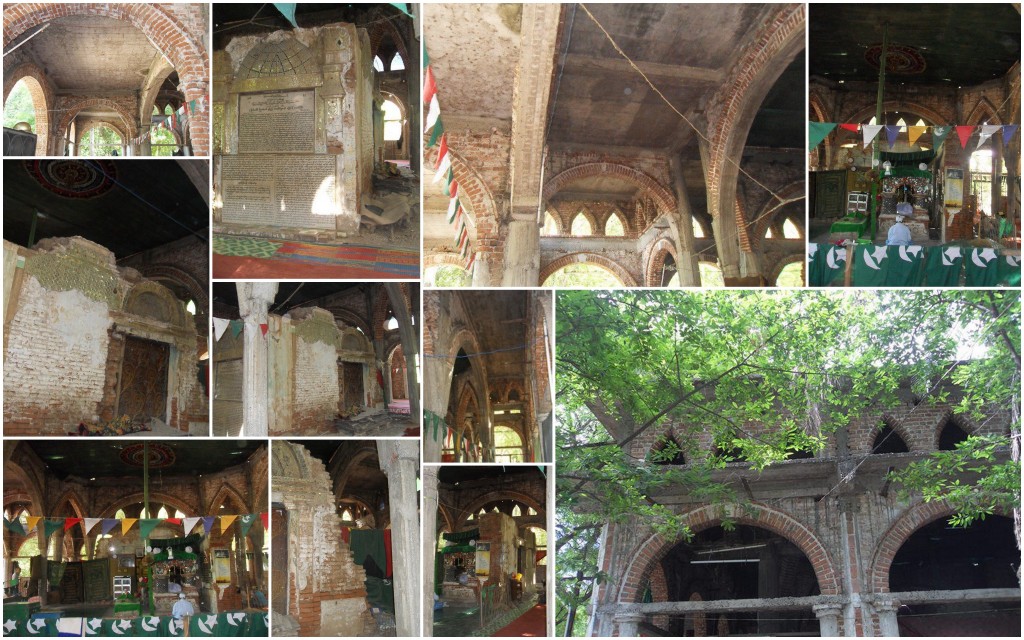
The Durgah Daw (Tomb) of the Saint Abid Shah Husainni, the king’s appointed Leader of Muslims of Myanmar during the King Along Phayar (King Badon)
During the Crisis in 1997, the tomb was set to fire, and the renovation thereafter was also forced to discontinue
Q: As far as I know, the Durgah was also destroyed during the conflict in 1997. After that the renovation started, and then, why has it stopped before it was completely renovated? Were you not allowed to?
A: Yes, the permission to renovate this has been halted. After 1997 conflict, it was allowed to renovate, and it has been partially done as you can see at present, later on, it was ceased before it was complete, while the previous commander of Mandalay division was in-charge. We tried to have a chance to meet him and request him to let it continue, but we couldn’t as he refused to. When we applied for the renovation, the military government then permitted that with an official letter, but when we were ordered to stop renovating, it was only the Verbal Order, no written document at all. Now in the present government’s regime, Mandalay City and Development council just said not to do anything, but nothing was officially ordered from the authorities.
Q: So, can we say there has been no official order for discontinuation of renovation?
A: Yes, no officially written order, only verbal orders. But things might have caused worse if we hadn’t stopped, so we had to. But we are trying our best for that. As there is hope for better democracy here, things will be better we hope.
Q: Now, as we cannot bury here anymore, how are you arranging for that?
A: People from Amarapura have to go through four townships up to Kyar Ni Kan Cemetery. Normally, it is not allowed to carry a corpse through the townships, but now we have to pass through four townships, sometimes when it coincides with the VIP’s special route, we have to go through even five townships.
Q: It means that the corpses are carried from Amarapura the Southernmost to Kyar Ni Kan the Northernmost of Mandalay.
A: Exactly. Even for the car rental fee, it costs about 45,000 kyats to 50,000 kyats per car.
Q: May I ask you one thing? There are several monasteries around this Amarapura Lin-Zin-Kone Cemetery. How is the relationship with the monks there?
A: Yes, there are monasteries all around here. Sayardaw U Janakka Thara Biwonsa, the fonder and head monk of Mahar Gandaryone Monastery, has been very close to Khalifah U Maung Maung Gyi, the Leader of KAFTG Gharana Family. And also, Sayardaw U Pyinnyar Zawta (Ko Pyinnyar_Amarapura) from Taung Lay Lone Monastery even mentioned about Durgah in his book. Monks from the monasteries around here have a very good understanding towards us. We are also getting along well with them. Sometimes, we even offer food to our close monks. People with all creeds in Amarapura have mutual respect and understanding towards each other.
Q: My last question: You said in Amarapura, people from different religions show mutual respect and understanding, but how come the Durgah was set fire to, during 1997 conflict? What do you say about that?
Well, we could say in confidence that it wasn’t done by the monks nearby. The elder high-ranked monks here have a complete control over the younger ones from their monasteries. So, they were not from nearby monasteries.
Q: Thank you very much for your time. Last month we came to know that this Lin-Zin-Kone Cemetery would be demolished. So we come here today, even if it would be cleared off (May Allah forbid that), there could be something recorded left as historic proof or evidence. And we assume that most of the young people do not know about this historic place, and we wanted to make them aware of these sentimental values.
A: We are also glad to tell you about this. Here is a book on the biography of the Saint Abid Shah Husainni. You can learn the details about the Durgah.
Sayar U Pyinnyar Zawta ( pseudonym : Ko Pyinnyar_Amarapura) mentioned about “The Durgah Daw” in his book named “The Historic Places around Taung Thaman” (Appendix) Pg. 75 & 76, 1st Edition, 1996, and that was translated by Late renowned History Professor Dr. Than Tun as below.
“THE DARAGA DAW”
Arbhisha Hussaini’s tomb is commonly called the Daraga Daw. (Durgah is Persian meaning a royal court; with an extended meaning in India it is used to mean a shrine of a Mohammedian saint for prayer.) It is located on the north of Mezabin (Madhuca longifolia) avenue, west of “Red Pagoda” (Shwe Mutthaw Thein Hpaya), east of the wards called O-daw (Royal Potters) and Hmite Su (People engaed in reclaiming gold dust from the refuses collected from pagoda precincts and goldsmith’s workshop) and in the Lin Zin Gon cemetery.
Arbhisha Hussaini was born 1776 and came at the age of nineteen to Amarapura in 1795. He died at the age of only thirty nine in 1815 after serving the king as the leader of the Islamic people for twenty years.
He had written thirty books on Mohaedanism. At a funeral of a female devotee or Moree he came to sit under a Zagawa (Michelia champaca) tree and as he was so pleased with that place in the garden he said:
“I wish I would be buried here”. Surely his wish was fulfilled and a Durgah was built in his memory at his tomb under the Zagawa tree that he had chosen.
The Ponna Wun (Officer – in – Charge of Brahmins) bought the gardenand gave it to him before he died.
Credit : “The Biography of Hazarat Sayyid Khwaja Hafiz Muhammed Sharif Abid Shah Husainni” published by The Durgah Daw Trustee Committee, Page 34, 34, 36.

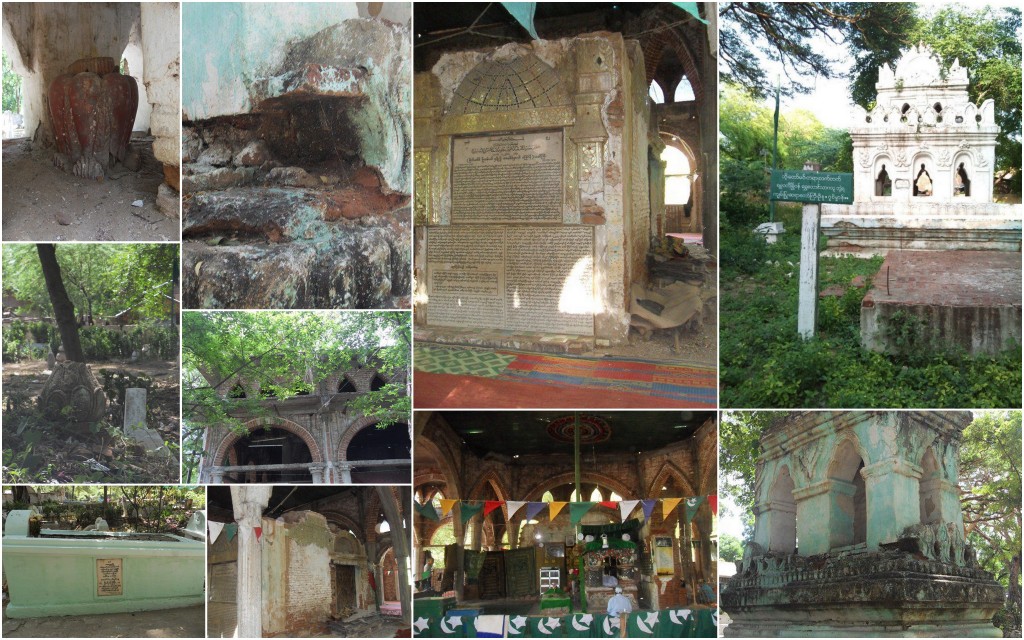
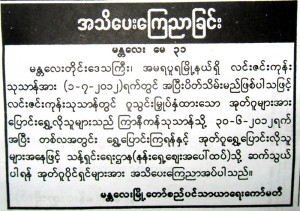
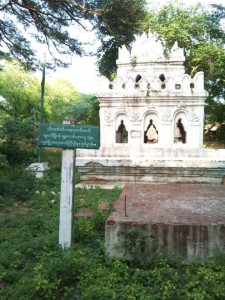

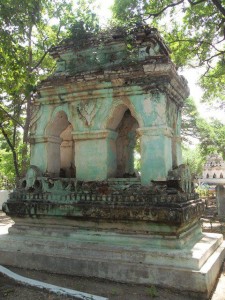
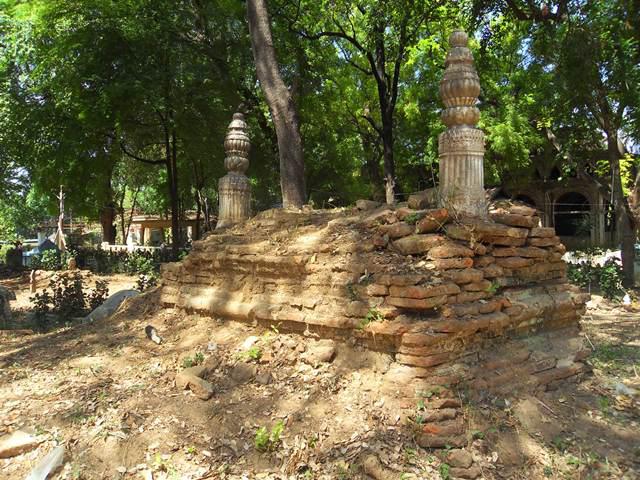
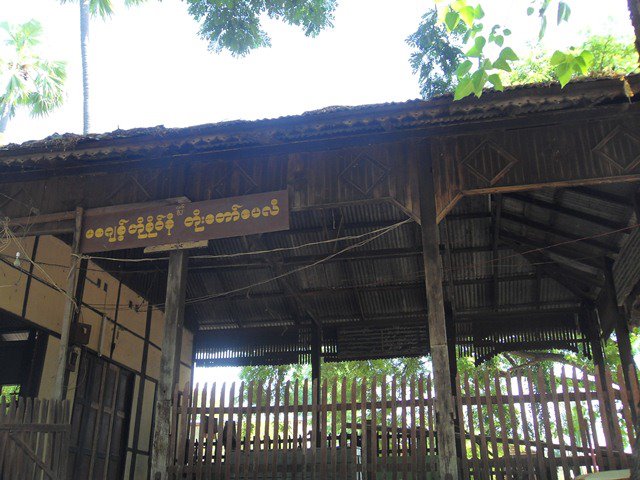
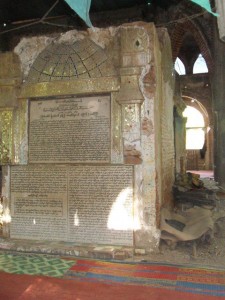
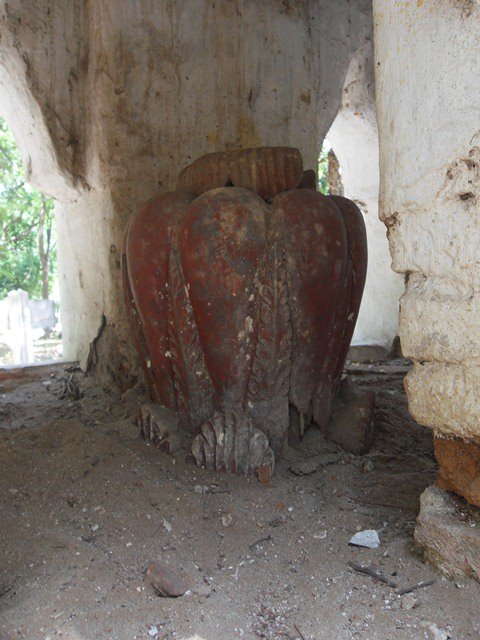
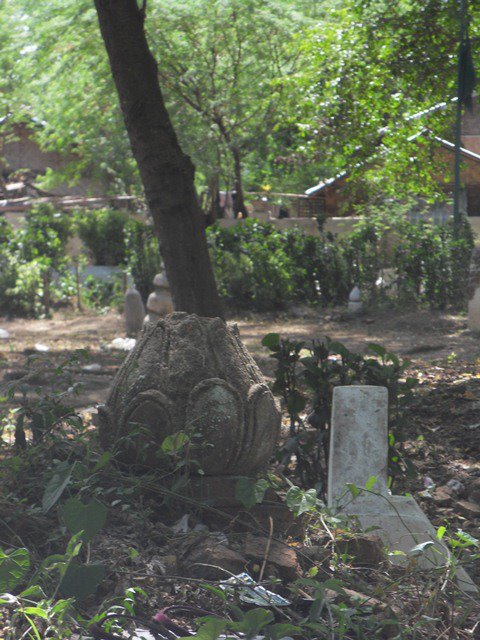
















Comments